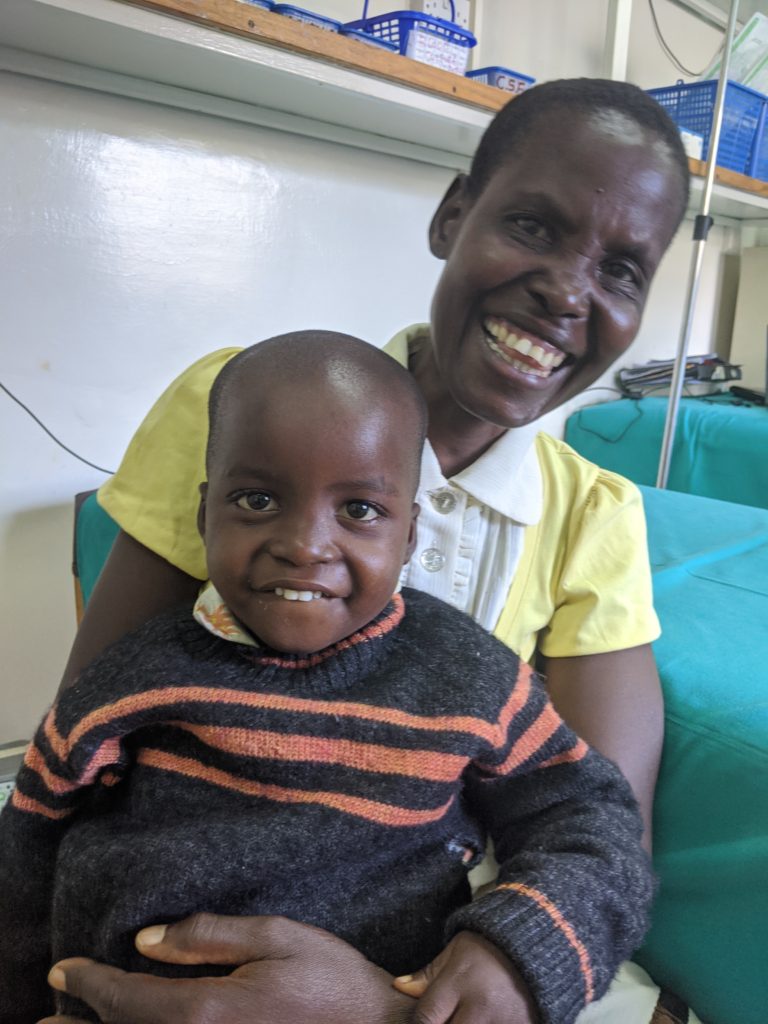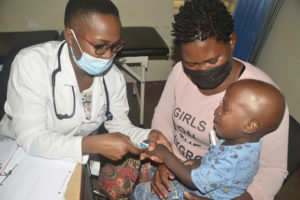My brain better recalls events that make an emotional impression. One in every 6 children we admit to the Pediatric Research Ward does not go home alive. Of course, that means 5 of 6 children return to their families, a joy for everyone. Although the deaths stick in my mind, I try to remember the many victories. It is a delight to witness a child beating this terrible illness. Though every death hits me hard, some are more memorable.
The healthcare team make patient rounds twice per day, once at 8 a.m., the second at 4 p.m. There are six beds in the Research Ward. We start at one end. The team moves from one metal crib to the next, talking to the caregiver, examining the child, and figuring out what (if any) therapies or diagnostic tests need to be performed in the next few hours. In the crib is a plastic covered mattress covered by a dark green hospital sheet. Children lay unmoving because in cerebral malaria, they are all in deep coma. They are covered by a thin sheet, either a brightly patterned chitenje from their family or a white blanket provided by the Ward. Unlike in a European or US hospital, there are no electronic monitors to constantly measure the child’s heartbeat and breathing. The caregiver sits on a small stool at the side of the child’s crib, and sleeps underneath. They are constantly only a few feet away, ready to help.
When a child, previously on the edge of death, walks into the room and says “muli bwanji”, no one can stop smiling.
As the medical team moves from one child’s bed to the next, sometimes things do not go as anticipated. Occasionally, the team moves to a bed in the middle of the group, asks the parent how the child is doing, pulls back the thin white blanket, and the child has died. The parent, always nearby, does not know. The Research Ward is full of other gravely ill children and their guardians.
The first time I witnessed this I was traumatized. Over the years, as I have experienced this scenario repeatedly, I have learned the healthcare team’s next steps. The blanket is returned to where it began, gently covering the child. The team does not change their tone of voice. One person leaves and asks a Chichewa speaker to enter the Ward after a short delay, to not arouse suspicion. There is an announcement that shortly the Ward will be mopped and cleaned. All the guardians are asked to temporarily leave to allow the housekeeping staff to better do their jobs. After the Research Ward is emptied of family members, the body is wrapped tightly in a sheet and removed to a different room. The caregiver of the deceased child is quietly taken aside and told what has happened. In a short while, we hear a loud cry for the dead. They know.
Patient rounds continue. The other hospitalized children need caring for, despite the tragedy we have all just witnessed.
Frankly, from a medical standpoint, it is astounding that most of our patients live. On arrival to the hospital, all the children are gravely ill, walking a tightrope between life and death. Cerebral malaria is 100% fatal if untreated. In the Research Ward, 85% survive. Most deaths occur in the first 48 hours after arrival at the hospital. Once a child passes that time point, the healthcare team relaxes. After a few days in the hospital they go home, scheduled to return one month later for a follow-up visit.
I love seeing the families back for post-hospital visits. We take a history and examine the child. They receive neurological and developmental testing to evaluate whether they have continuing problems resulting from cerebral malaria. When a child, previously on the edge of death, walks into the room and says “muli bwanji”, no one can stop smiling.







